Wondering if the Costa Brava is worth visiting? Uncover the highlights and start planning your adventure.
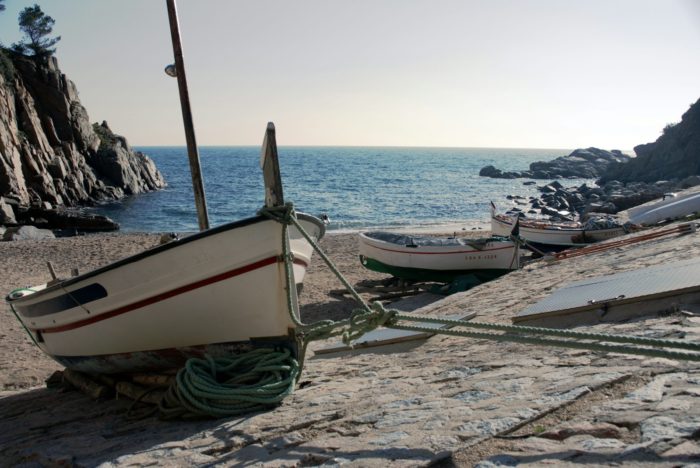
The Costa Brava, located in the north-eastern part of Spain, is a coastal region that stretches from Blanes to the French border. Known for its rugged cliffs, picturesque beaches, charming towns, and rich cultural heritage, the Costa Brava has become a popular destination for travellers from around the world. But is Costa Brava worth visiting? This article will explore the top reasons why you should consider making the Costa Brava your next holiday destination.
Natural beauty and landscapes
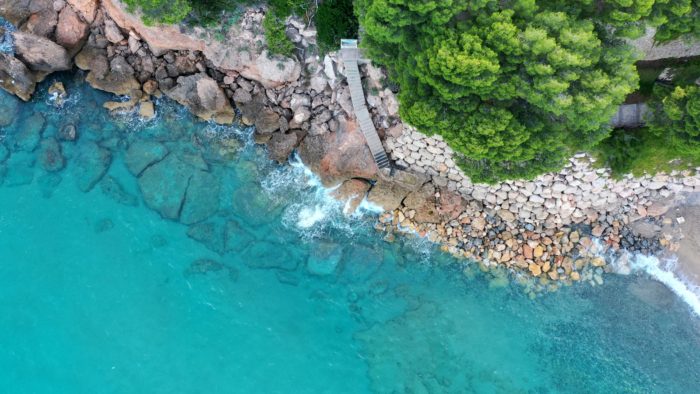
One of the most compelling reasons to visit the Costa Brava is its natural beauty. The region boasts a diverse landscape that ranges from rugged cliffs and secluded coves to sandy beaches and lush pine forests. Here are some highlights:
Stunning coastline
The Costa Brava coastline is renowned for its dramatic cliffs and crystal-clear waters. Towns like Tossa de Mar and Cadaqués offer breath-taking views and pristine beaches that are perfect for swimming, sunbathing, and water sports. The coastal paths, known as camins de ronda, provide scenic walking trails that allow visitors to explore hidden coves and enjoy panoramic views of the Mediterranean Sea.
Beautiful beaches
The Costa Brava is home to some of the best beaches in Spain. From the family-friendly Platja de Pals to the more secluded Cala Pola, there is a beach to suit every preference. The golden sands and turquoise waters create an idyllic setting for relaxation and recreation. Many beaches also offer facilities such as beach bars, sun loungers, and water sports equipment rentals.
Natural parks and reserves
For nature enthusiasts, The Costa Brava offers several protected areas that showcase the region’s biodiversity. The Cap de Creus Natural Park, located near Cadaqués, features rugged cliffs, hidden coves, and unique rock formations. The Aiguamolls de l’Empordà Natural Park is a haven for birdwatchers, with its wetlands and diverse bird species. Additionally, the Montgrí, Medes Islands and Baix Ter Natural Park offers opportunities for hiking, diving, and exploring underwater marine life.
Picturesque countryside
Beyond the coast, The Costa Brava’s interior is dotted with rolling hills, vineyards, and medieval villages. The scenic countryside is perfect for cycling, hiking, and wine tasting tours. Towns like Pals and Peratallada retain their medieval charm with narrow cobblestone streets, stone houses, and ancient fortifications, providing a glimpse into the region’s history and culture.
Cultural and historical significance
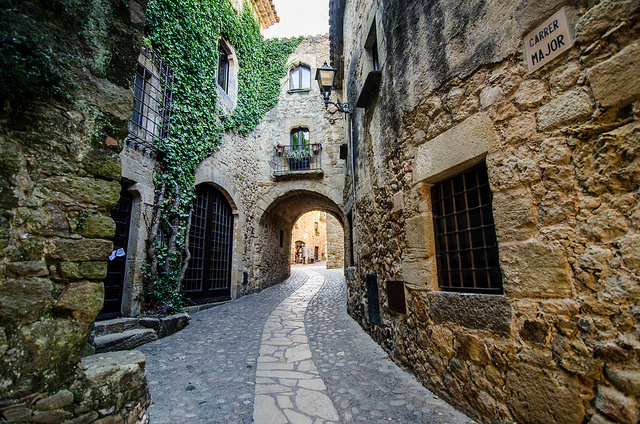
The Costa Brava is not just about its natural beauty; it is also rich in cultural and historical heritage. The region is dotted with ancient ruins, medieval villages, and cultural sites that offer a deep dive into its fascinating past.
Historical sites
The Costa Brava is home to numerous historical sites that date back to different periods in history. The ancient ruins of Empúries, near L’Escala, are a remarkable archaeological site where visitors can explore the remains of a Greek and Roman city. The ruins include temples, houses, and mosaics that provide a glimpse into the life of ancient civilisations.
Medieval villages
The region boasts several well-preserved medieval villages that transport visitors back in time. Pals, with its cobblestone streets, Gothic architecture, and panoramic views, is a must-visit. Peratallada is another gem, known for its stone houses, narrow alleys, and historic castle. These villages offer a charming setting for leisurely strolls and exploring local shops and restaurants.
Museums and art
The Costa Brava has a vibrant art scene, heavily influenced by the famous surrealist artist Salvador Dalí. The Dalí Theatre-Museum in Figueres is a must-see, housing a vast collection of Dalí’s works and offering insight into his creative genius. Additionally, the region hosts several other museums, such as the Museu d’Art de Girona and the Museu del Joguet in Figueres, which showcase local art, history, and culture.
Festivals and traditions
The Costa Brava is known for its lively festivals and cultural traditions. The region celebrates various events throughout the year, such as the Havaneres Festival in Calella de Palafrugell, which features traditional sea shanties, and the Temps de Flors in Girona, a stunning flower festival that transforms the city with floral displays. These festivals provide a unique opportunity to experience the local culture and community spirit.
Architectural landmarks
The architectural heritage of the Costa Brava is equally impressive. The city of Girona, with its well-preserved medieval architecture, is home to the Girona Cathedral, a stunning example of Gothic and Romanesque styles. The Jewish Quarter, known as El Call, is one of the best-preserved in Europe and offers a glimpse into the history of Girona’s Jewish community. Another notable site is the Monastery of Sant Pere de Rodes, perched on a hilltop with panoramic views of the surrounding landscape.
Outdoor activities and adventures

A sailing boat out on the water. Photo by Artem Verbo
The Costa Brava is a paradise for outdoor enthusiasts, offering a wide range of activities that cater to different interests and skill levels. From water sports to hiking and cycling, there is no shortage of adventures to be had in this beautiful region.
Water sports
The Costa Brava’s crystal-clear waters are perfect for a variety of water sports. Popular activities include snorkelling, scuba diving, kayaking, and paddleboarding. The Medes Islands, located near L’Estartit, are particularly renowned for their excellent diving conditions, with abundant marine life and underwater caves to explore. Many coastal towns offer equipment rentals and guided tours, making it easy for visitors to enjoy these activities.
Hiking and cycling
Costa Brava’s diverse landscape provides numerous opportunities for hiking and cycling. The coastal paths, known as camins de ronda, offer scenic hiking trails that wind along the coastline, providing stunning views and access to hidden coves. For a more challenging hike, the GR 92 trail runs the length of the Costa Brava and offers a variety of terrains and spectacular vistas. Cycling enthusiasts can explore the region’s countryside, with routes that take them through vineyards, medieval villages, and rolling hills.
Adventure parks
For families and thrill-seekers, the Costa Brava has several adventure parks that offer a fun and exciting way to experience the region’s natural beauty. Parks like Aventura Parc in Platja d’Aro and Jungle Parc in Pals feature zip lines, rope courses, and climbing walls that cater to different age groups and skill levels. These parks provide a safe and exhilarating environment for outdoor adventure.
Golf
The Costa Brava is also a popular destination for golf enthusiasts, boasting several world-class golf courses set against stunning backdrops. The PGA Catalunya Resort, located near Girona, is one of the top golf destinations in Europe, offering two championship courses that challenge and delight players of all levels. Other notable courses include Golf de Pals and Golf Platja de Pals, both of which offer beautiful scenery and excellent facilities.
Sailing and boating
The Mediterranean waters of the Costa Brava are ideal for sailing and boating. Many coastal towns have marinas that offer boat rentals, sailing courses, and guided tours. Visitors can explore the coastline, visit secluded beaches, and enjoy the tranquillity of the open sea. Popular sailing destinations include the Bay of Roses, the coves of Begur, and the beaches of Lloret de Mar.
Rock climbing
The Costa Brava’s rugged cliffs and rocky outcrops provide excellent opportunities for rock climbing. Areas like Montgrí and Cap de Creus offer a range of climbing routes that cater to different skill levels. Whether you’re a beginner or an experienced climber, the region’s varied terrain and stunning views make for an unforgettable climbing experience.
Culinary delights
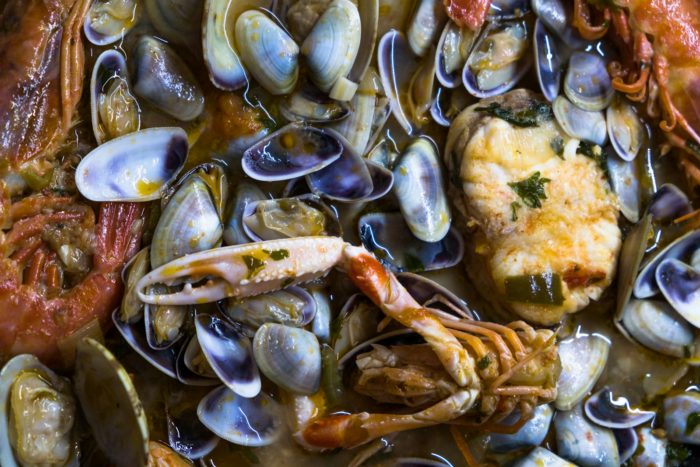
The culinary scene on the Costa Brava is a significant draw for food enthusiasts, offering a delightful mix of traditional Catalan cuisine, fresh seafood, and innovative gastronomy. Here are some of the culinary highlights that make Costa Brava worth visiting:
Traditional Catalan cuisine
The region is renowned for its traditional Catalan dishes, which are characterised by their use of fresh, local ingredients and bold flavours. Some must-try dishes include:
Paella: Although originally from Valencia, paella is a popular dish in the Costa Brava, often made with a variety of seafood and saffron-infused rice.
Suquet de Peix: A traditional Catalan fish stew made with a variety of local fish, potatoes, and a rich, flavourful broth.
Esqueixada: A refreshing salad made with shredded salt cod, tomatoes, onions, and olives, dressed with olive oil and vinegar.
Botifarra: A type of Catalan sausage, often grilled and served with white beans or as part of a hearty stew.
Fresh seafood
Given its coastal location, the Costa Brava boasts an abundance of fresh seafood. Local restaurants and beachside xiringuitos (beach bars) serve a wide range of seafood dishes, from grilled fish and prawns to squid and mussels. The fishing towns of Palamós and Roses are particularly known for their high-quality seafood, including the famous Palamós prawns.
Michelin-starred restaurants
The Costa Brava is home to several Michelin-starred restaurants that offer exceptional dining experiences. One of the most famous is El Celler de Can Roca in Girona, which has been named the best restaurant in the world multiple times. Run by the Roca brothers, the restaurant offers innovative dishes that blend traditional Catalan flavours with modern techniques. Other notable Michelin-starred restaurants in the region include Miramar in Llançà and Les Cols in Olot.
Local markets
Exploring the local markets is a great way to experience the Costa Brava’s culinary culture. Markets like the Mercat de Sant Feliu de Guíxols and the Mercat Municipal in Girona offer a wide variety of fresh produce, meats, cheeses, and seafood. These markets provide an opportunity to sample local delicacies and purchase ingredients for a homemade meal.
Wine and cava
The Costa Brava’s Empordà wine region produces excellent wines and cava (sparkling wine). The region’s wineries offer tours and tastings, allowing visitors to sample a variety of reds, whites, and rosés. Some notable wineries include Perelada, Mas Oller, and Castillo de Perelada. The local wines pair perfectly with the region’s cuisine and provide a taste of the Costa Brava’s rich viticultural heritage.
Cooking classes
For those interested in learning more about Catalan cuisine, the Costa Brava offers various cooking classes. These classes provide hands-on experience in preparing traditional dishes, often led by local chefs. Participants can learn to make paella, tapas, and other regional specialities while gaining insight into the local culinary traditions.
Festivals and events
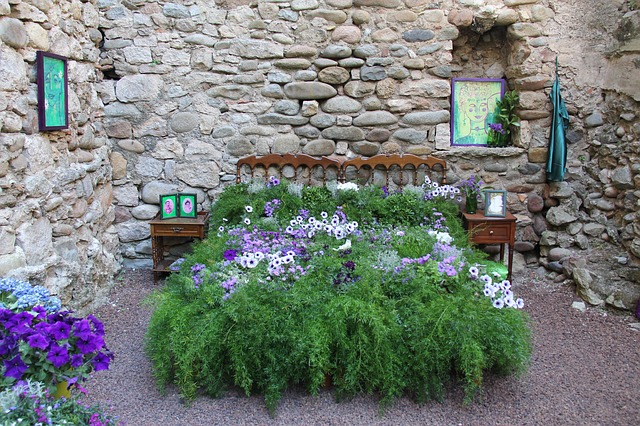
The Costa Brava is known for its vibrant festivals and cultural events, which offer visitors a unique opportunity to experience the region’s rich traditions and lively atmosphere. Here are some of the key festivals and events that make the Costa Brava worth visiting:
Havaneres Festival
The Havaneres Festival in Calella de Palafrugell is one of the most iconic events in the Costa Brava. Held annually in July, this festival celebrates the traditional sea shanties known as “havaneres.” These songs, which have roots in the Cuban habanera rhythm, are performed by groups on the beach, accompanied by the sounds of the waves. The event culminates in a communal singing of the popular song El Meu Avi, creating a magical atmosphere.
Temps de Flors
Every May, the city of Girona transforms into a floral wonderland during the Temps de Flors festival. The streets, squares, and historic buildings are adorned with intricate floral displays, attracting thousands of visitors. The festival also includes art installations, guided tours, and various cultural activities, making it a perfect time to explore the city’s rich heritage and stunning architecture.
Carnival of Platja d’Aro
The Carnival of Platja d’Aro is one of the most spectacular carnivals in the Costa Brava. Held in February, this event features vibrant parades, elaborate costumes, and lively music. The carnival is a family-friendly affair, with activities and events for all ages. The grand parade, which takes place on the final weekend, is the highlight of the carnival, drawing large crowds to the streets of Platja d’Aro.
Festa Major
Many Costa Brava towns and villages celebrate their own Festa Major, or major festival, which is a highlight of the local calendar. These festivals often take place in the summer and include traditional music, dancing, fireworks, and processions. Notable Festa Major celebrations include those in Blanes, Palamós, and Tossa de Mar. These events offer an authentic glimpse into the local culture and community spirit.
Peralada Festival
The Peralada Festival, held in the beautiful medieval town of Peralada, is a prestigious cultural event that takes place in July and August. The festival features a diverse programme of music, dance, and theatre performances, set against the backdrop of the stunning Peralada Castle. Renowned artists from around the world participate in the festival, making it a must-visit for culture enthusiasts.
Cavatast
For lovers of sparkling wine, the Cavatast festival in Sant Sadurní d’Anoia is a must-visit. Held in October, this event celebrates cava, the region’s famous sparkling wine. Visitors can enjoy tastings, workshops, and guided tours of local wineries. The festival provides an excellent opportunity to sample a wide variety of cava and learn about the production process.
Architectural landmarks
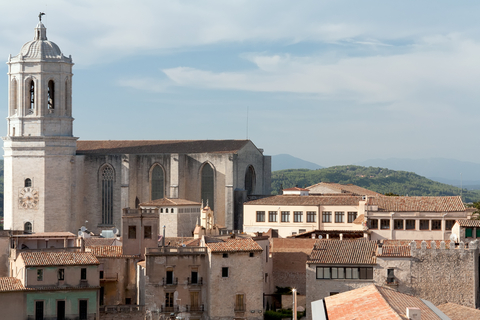
The Costa Brava is rich in architectural heritage, with landmarks that reflect its historical and cultural significance. Here are some of the key architectural sites that make the Costa Brava worth visiting:
Girona Cathedral
The Girona Cathedral, also known as the Cathedral of Saint Mary of Girona, is a stunning example of Gothic and Romanesque architecture. Located in the heart of Girona’s old town, the cathedral boasts the widest Gothic nave in the world. Visitors can admire its impressive façade, climb the steps to the entrance, and explore the interior, which includes a museum housing religious art and artefacts.
The Jewish Quarter (El Call)
Girona’s Jewish Quarter, known as El Call, is one of the best-preserved in Europe. This maze of narrow, cobbled streets dates back to the Middle Ages and offers a glimpse into the history of Girona’s Jewish community. Key sites include the Museum of Jewish History, which provides insight into the lives and culture of the Jewish population in medieval Spain, and the ancient synagogues.
Monastery of Sant Pere de Rodes
Perched on a hilltop in the Cap de Creus Natural Park, the Monastery of Sant Pere de Rodes offers panoramic views of the surrounding landscape. This Benedictine monastery, dating back to the 10th century, is an architectural marvel with its Romanesque design and intricate carvings. Visitors can explore the church, cloisters, and tower while enjoying the stunning scenery.
Dalí Theatre-Museum
Located in Figueres, the Dalí Theatre-Museum is a must-visit for art and architecture enthusiasts. Designed by Salvador Dalí himself, the museum is as much a work of art as the pieces it houses. The building features surrealist architecture, with a facade adorned with golden statues and giant eggs. Inside, visitors can explore a vast collection of Dalí’s works, including paintings, sculptures, and installations.
Sant Feliu de Guíxols Monastery
The Monastery of Sant Feliu de Guíxols is an impressive example of Romanesque architecture. Founded in the 10th century, the monastery features a striking facade with twin towers and a large arched doorway. The site also includes a museum that showcases the history and culture of the region. The monastery’s location, overlooking the Mediterranean Sea, adds to its appeal.
Castle of Begur
The Castle of Begur, situated on a hilltop overlooking the town, offers stunning views of the Costa Brava coastline. Although only ruins remain of the original 11th-century castle, the site is a popular destination for its panoramic vistas and historical significance. Visitors can hike up to the castle and enjoy the scenic beauty of the surrounding area.
The Bridge of Besalú
The medieval town of Besalú is home to the iconic Besalú Bridge, a well-preserved Romanesque bridge that spans the Fluvià River. This stone bridge, with its distinctive arches and fortified gatehouse, is a testament to the engineering prowess of the medieval period. The town itself is a delight to explore, with its cobbled streets, historic buildings, and picturesque setting.
Cap Roig Gardens
The Cap Roig Gardens, located near Calella de Palafrugell, combine beautiful landscapes with stunning architecture. The gardens, created in the 1920s, feature a wide variety of plants, sculptures, and fountains set against the backdrop of the Mediterranean Sea. The site also includes the Cap Roig Castle, a striking building with Gothic and Moorish influences.
Still wondering if the Costa Brava is worth visiting?
The Costa Brava is undoubtedly worth visiting, offering a rich variety of natural beauty, cultural heritage, and activities. From its stunning coastline and pristine beaches to its historical sites and vibrant festivals, Costa Brava caters to a wide range of interests and preferences. Whether you’re an outdoor enthusiast looking for adventure, a history buff eager to explore ancient ruins and medieval villages, or a foodie keen to sample the region’s culinary delights, The Costa Brava has something for everyone.
The region’s architectural landmarks, such as the Girona Cathedral, the Monastery of Sant Pere de Rodes, and the Dalí Theatre-Museum, provide a fascinating glimpse into its historical and artistic legacy. Meanwhile, the lively festivals and events, including the Havaneres Festival and Temps de Flors, offer unique cultural experiences that capture the spirit of Costa Brava.
With its combination of breath-taking landscapes, rich history, and vibrant culture, the Costa Brava is a destination that promises an unforgettable holiday. So, is Costa Brava worth visiting? Absolutely. Plan your trip, immerse yourself in the beauty and heritage of this remarkable region, and create lasting memories in one of Spain’s most captivating destinations.

